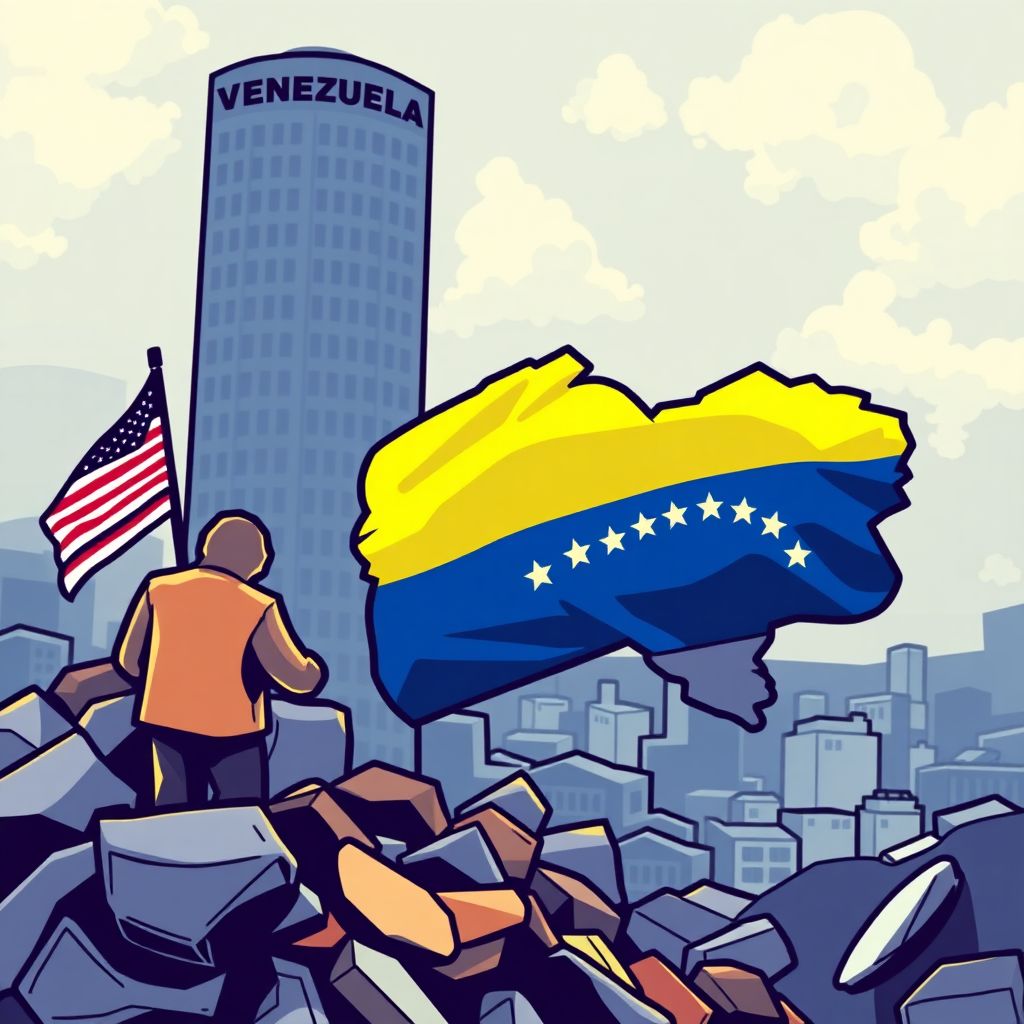Venezuela Deepens Stablecoin Adoption Amid Mounting Political Tensions and Economic Collapse
As Venezuela faces escalating geopolitical tensions and internal economic collapse, the country’s population and government alike are turning increasingly to stablecoins as a financial lifeline. The looming threat of military aggression from the United States, combined with ongoing global sanctions and hyperinflation, has significantly accelerated the adoption of dollar-pegged cryptocurrencies such as Tether (USDT).
In recent weeks, the U.S. Department of Defense has deployed advanced military assets, including a state-of-the-art aircraft carrier, to the Caribbean, heightening fears of potential conflict. This move followed U.S. President Donald Trump’s accusations that Venezuelan drug cartels are fueling America’s opioid crisis by trafficking narcotics. Venezuelan President Nicolás Maduro has publicly rejected these claims, pleading to avoid a military confrontation and warning that war would devastate an already fragile nation.
For millions of Venezuelans, the economic implications of a potential war are dire. Inflation continues to surge at triple-digit levels, rendering the national currency, the bolívar, virtually worthless. In this context, stablecoins — digital currencies tied to the U.S. dollar — have emerged as a tool for survival. Known colloquially as “Binance dollars,” these digital assets are increasingly used for day-to-day purchases and as a store of value, especially as physical dollar reserves in the country dwindle.
The Venezuelan government itself has embraced stablecoins to bypass sanctions and facilitate international trade. Oil exports — once the backbone of the national economy — are now partially transacted in USDT, particularly in dealings with strategic allies like Russia. This pivot to crypto has enabled Venezuela to maintain some level of economic functionality despite its pariah status in traditional financial systems.
According to recent reporting, stablecoins now account for up to 50% of the hard currency legally entering Venezuela. The country has, in effect, restructured a significant portion of its economy around crypto assets, making it one of the most prominent national use cases for stablecoins globally.
Venezuela ranks fourth in Latin America in terms of crypto adoption, receiving an estimated $44.6 billion in crypto value from July 2024 to June 2025. Only Brazil, Argentina, and Mexico surpass it — all of which have significantly larger populations. This figure reflects not just interest in cryptocurrency but also a desperate need to escape the pitfalls of a collapsing financial system.
Among the country’s most high-profile crypto adopters is Maria Corina Machado, a former presidential candidate and staunch opponent of Maduro’s regime. Machado has used Bitcoin (BTC) to shield her assets from government seizure. Her advocacy for democratic reform and peaceful resistance earned her the Nobel Peace Prize this year — marking the first time this honor has been awarded to a known Bitcoin user. Her recognition highlights the growing link between financial sovereignty, human rights, and decentralized technologies.
Since Nicolás Maduro took power in 2013, nearly 8 million Venezuelans have fled the country, driven by economic ruin, shortages of essentials such as food and medicine, and widespread civil unrest. Many of these exiles lost access to traditional banking services and turned to cryptocurrencies like USDT to preserve their wealth and send remittances abroad. This diaspora, in turn, has helped fuel the domestic demand for digital assets, creating an informal financial bridge between those inside and outside Venezuela.
The current situation also underscores the broader geopolitical utility of stablecoins. While often seen as speculative tools in developed markets, in Venezuela they serve as a critical hedge against inflation and political instability. The decentralized nature of these assets allows citizens to retain control over their finances without relying on a compromised banking system.
Moreover, with traditional payment infrastructure in disrepair, the accessibility of crypto wallets and peer-to-peer platforms has made it easier for Venezuelans to conduct transactions, pay for everyday goods, and even access international services. Informal economies powered by stablecoins have popped up in major cities, where businesses now accept USDT or other stable digital currencies in lieu of bolívars or physical dollars.
Looking ahead, if tensions between the U.S. and Venezuela escalate into open conflict, reliance on stablecoins is likely to increase even further. With potential disruptions to internet access and financial networks, Venezuelans may increasingly adopt offline or mesh-network crypto solutions to maintain access to their digital assets.
The Venezuelan case offers a powerful example of how blockchain technology and stablecoins can serve as instruments of financial resilience in failing states. While the ethical and political implications of crypto adoption by authoritarian regimes continue to be debated, for ordinary citizens, these tools provide a rare degree of autonomy and economic agency.
In the face of adversity, Venezuela’s pivot to stablecoins reflects not just a technological shift, but a profound transformation in how people conceptualize money, trust, and sovereignty. Whether this trend will stabilize the nation or entrench existing inequalities remains to be seen, but its impact is already reshaping the country’s economic landscape in real time.
As the world watches Venezuela navigate through political turmoil and economic collapse, its growing dependence on crypto could serve as a blueprint — or a warning — for other nations facing similar crises.

